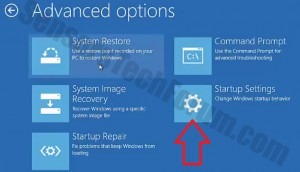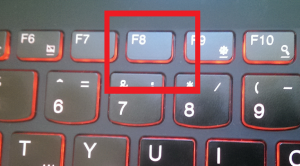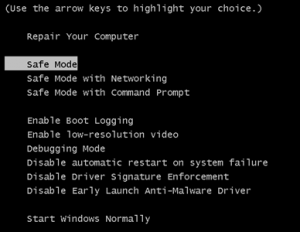| Name | Infostealer.Bebloh |
| Type | Stealer Trojan |
| Short Description | Steals important user data by copying or cutting it to a foreign server. |
| Symptoms | May slow down PC severly at times and may run hidden processes. |
| Distribution Method | Via infected emails, dangerous redirects infected flash drives, etc. |
| Detection tool | Download Malware Removal Tool, to See If Your System Has Been Affected By Infostealer.Bebloh |
 A new information theft-type of Trojan has emerged out into the open, going by the name Infostealer.Bebloh. Security experts believe that the trojan is not a high-risk threat, but if a PC is improperly secured it can be utilized in packages to steal all types of information from the user PC. Engineers believe that the Trojan is created with the purpose of modifying certain settings. One of the symptoms to recognize it is if your CPU is showing a high amount of usage even though you are not running in the Windows Task Manager. You may not identify it as a process since these programs usually contain scripts that allow them to modify settings and run as hidden processes in the background. The info stealer is also believed to have something in common with Trojan.Bebloh.
A new information theft-type of Trojan has emerged out into the open, going by the name Infostealer.Bebloh. Security experts believe that the trojan is not a high-risk threat, but if a PC is improperly secured it can be utilized in packages to steal all types of information from the user PC. Engineers believe that the Trojan is created with the purpose of modifying certain settings. One of the symptoms to recognize it is if your CPU is showing a high amount of usage even though you are not running in the Windows Task Manager. You may not identify it as a process since these programs usually contain scripts that allow them to modify settings and run as hidden processes in the background. The info stealer is also believed to have something in common with Trojan.Bebloh.
Infostealer.Bebloh – How Did I Get Infected?
One way to become a victim of this stealer type of trojan is by opening contents of suspicious emails. Most cybercriminals send out spam emails to many users as a part of infection campaigns. The email itself is usually disguised as something important such as ‘Windows Free Upgrade’, ‘Mail regarding your paycheck’ and others. Most users know that such mail is spam or have software that blocks it out. But cyber criminals always find a way to convince inexperienced emailers to open infected mail attachments.
Another way Infostealer.Bebloh may have infected your computer with is connected with social media. Most spambots tend to distribute non-flagged malicious links in the form of messages and status updates or sharing. These usually infect user PCs.
Infostealer.Bebloh – What Can It Do?
Although it is not specific on what this particular Trojan horse may do to your computer, it is clear that once it has been activated , it gains administrative privileges. These may allow it to have read and write permissions.
The infostealer may connect to the domain of the attacker, allowing him remote access to the user files so that he decides which files are to be copied to his servers. Also, it may be modified to be a part of a more sophisticated Trojan toolkit and could download other hazardous files to your computer. Such files may be its encrypting tool that allows it to be hidden from the antivirus. Since some anti-malware programs are particularly useful against such threats, the info stealer may use different methods to disable them. One symptom to detect it is if your anti-malware program has been disabled partially or completely.
Removing Infostealer.Bebloh
To remove this threat from your machine, make sure you isolate it first by disconnecting from the web. The most efficient way to neutralize it and revert all of your modified settings at the same time is to boot your computer in safe mode so that only the essential Windows processes are running. Then you should scan it with an updated anti-malware program downloaded from a secure computer. It should detect anything associated with this threat, including any Windows Registry Keys and values in it.
Step 1: Start Your PC in Safe Mode to Remove Infostealer.Bebloh.
Removing Infostealer.Bebloh from Windows XP, Vista, 7 systems:
1. Remove all CDs and DVDs, and then Restart your PC from the “Start” menu.
2. Select one of the two options provided below:
– For PCs with a single operating system: Press “F8” repeatedly after the first boot screen shows up during the restart of your computer. In case the Windows logo appears on the screen, you have to repeat the same task again.
– For PCs with multiple operating systems: Тhe arrow keys will help you select the operating system you prefer to start in Safe Mode. Press “F8” just as described for a single operating system.
3. As the “Advanced Boot Options” screen appears, select the Safe Mode option you want using the arrow keys. As you make your selection, press “Enter“.
4. Log on to your computer using your administrator account
While your computer is in Safe Mode, the words “Safe Mode” will appear in all four corners of your screen.
Removing Infostealer.Bebloh from Windows 8, 8.1 and 10 systems:
Substep 1:
Substep 2:
Whilst holding down Shift button, click on Power and then click on Restart.
Substep 3:
After reboot, the aftermentioned menu will appear. From there you should choose Troubleshoot.

Substep 4:
You will see the Troubleshoot menu. From this menu you can choose Advanced Options.

Substep 5:
After the Advanced Options menu appears, click on Startup Settings.

Substep 6:
Substep 7:
A menu will appear upon reboot. You should choose Safe Mode by pressing its corresponding number and the machine will restart and boot into Safe Mode so you can scan for and remove Infostealer.Bebloh.
Step 2: Remove Infostealer.Bebloh automatically by downloading an advanced anti-malware program.
To clean your computer you should download an updated anti-malware program on a safe PC and then install it on the affected computer in offline mode. After that you should boot into safe mode and scan your computer to remove all Infostealer.Bebloh associated objects.
Preparation before removing Infostealer.Bebloh.
Before starting the actual removal process, we recommend that you do the following preparation steps.
- Make sure you have these instructions always open and in front of your eyes.
- Do a backup of all of your files, even if they could be damaged. You should back up your data with a cloud backup solution and insure your files against any type of loss, even from the most severe threats.
- Be patient as this could take a while.
- Scan for Malware
- Fix Registries
- Remove Virus Files
Step 1: Scan for Infostealer.Bebloh with SpyHunter Anti-Malware Tool



Step 2: Clean any registries, created by Infostealer.Bebloh on your computer.
The usually targeted registries of Windows machines are the following:
- HKEY_LOCAL_MACHINE\Software\Microsoft\Windows\CurrentVersion\Run
- HKEY_CURRENT_USER\Software\Microsoft\Windows\CurrentVersion\Run
- HKEY_LOCAL_MACHINE\Software\Microsoft\Windows\CurrentVersion\RunOnce
- HKEY_CURRENT_USER\Software\Microsoft\Windows\CurrentVersion\RunOnce
You can access them by opening the Windows registry editor and deleting any values, created by Infostealer.Bebloh there. This can happen by following the steps underneath:


 Tip: To find a virus-created value, you can right-click on it and click "Modify" to see which file it is set to run. If this is the virus file location, remove the value.
Tip: To find a virus-created value, you can right-click on it and click "Modify" to see which file it is set to run. If this is the virus file location, remove the value.Step 3: Find virus files created by Infostealer.Bebloh on your PC.
1.For Windows 8, 8.1 and 10.
For Newer Windows Operating Systems
1: On your keyboard press + R and write explorer.exe in the Run text box and then click on the Ok button.

2: Click on your PC from the quick access bar. This is usually an icon with a monitor and its name is either “My Computer”, “My PC” or “This PC” or whatever you have named it.

3: Navigate to the search box in the top-right of your PC's screen and type “fileextension:” and after which type the file extension. If you are looking for malicious executables, an example may be "fileextension:exe". After doing that, leave a space and type the file name you believe the malware has created. Here is how it may appear if your file has been found:

N.B. We recommend to wait for the green loading bar in the navigation box to fill up in case the PC is looking for the file and hasn't found it yet.
2.For Windows XP, Vista, and 7.
For Older Windows Operating Systems
In older Windows OS's the conventional approach should be the effective one:
1: Click on the Start Menu icon (usually on your bottom-left) and then choose the Search preference.

2: After the search window appears, choose More Advanced Options from the search assistant box. Another way is by clicking on All Files and Folders.

3: After that type the name of the file you are looking for and click on the Search button. This might take some time after which results will appear. If you have found the malicious file, you may copy or open its location by right-clicking on it.
Now you should be able to discover any file on Windows as long as it is on your hard drive and is not concealed via special software.
Infostealer.Bebloh FAQ
What Does Infostealer.Bebloh Trojan Do?
The Infostealer.Bebloh Trojan is a malicious computer program designed to disrupt, damage, or gain unauthorized access to a computer system. It can be used to steal sensitive data, gain control over a system, or launch other malicious activities.
Can Trojans Steal Passwords?
Yes, Trojans, like Infostealer.Bebloh, can steal passwords. These malicious programs are designed to gain access to a user's computer, spy on victims and steal sensitive information such as banking details and passwords.
Can Infostealer.Bebloh Trojan Hide Itself?
Yes, it can. A Trojan can use various techniques to mask itself, including rootkits, encryption, and obfuscation, to hide from security scanners and evade detection.
Can a Trojan be Removed by Factory Reset?
Yes, a Trojan can be removed by factory resetting your device. This is because it will restore the device to its original state, eliminating any malicious software that may have been installed. Bear in mind that there are more sophisticated Trojans that leave backdoors and reinfect even after a factory reset.
Can Infostealer.Bebloh Trojan Infect WiFi?
Yes, it is possible for a Trojan to infect WiFi networks. When a user connects to the infected network, the Trojan can spread to other connected devices and can access sensitive information on the network.
Can Trojans Be Deleted?
Yes, Trojans can be deleted. This is typically done by running a powerful anti-virus or anti-malware program that is designed to detect and remove malicious files. In some cases, manual deletion of the Trojan may also be necessary.
Can Trojans Steal Files?
Yes, Trojans can steal files if they are installed on a computer. This is done by allowing the malware author or user to gain access to the computer and then steal the files stored on it.
Which Anti-Malware Can Remove Trojans?
Anti-malware programs such as SpyHunter are capable of scanning for and removing Trojans from your computer. It is important to keep your anti-malware up to date and regularly scan your system for any malicious software.
Can Trojans Infect USB?
Yes, Trojans can infect USB devices. USB Trojans typically spread through malicious files downloaded from the internet or shared via email, allowing the hacker to gain access to a user's confidential data.
About the Infostealer.Bebloh Research
The content we publish on SensorsTechForum.com, this Infostealer.Bebloh how-to removal guide included, is the outcome of extensive research, hard work and our team’s devotion to help you remove the specific trojan problem.
How did we conduct the research on Infostealer.Bebloh?
Please note that our research is based on an independent investigation. We are in contact with independent security researchers, thanks to which we receive daily updates on the latest malware definitions, including the various types of trojans (backdoor, downloader, infostealer, ransom, etc.)
Furthermore, the research behind the Infostealer.Bebloh threat is backed with VirusTotal.
To better understand the threat posed by trojans, please refer to the following articles which provide knowledgeable details.





